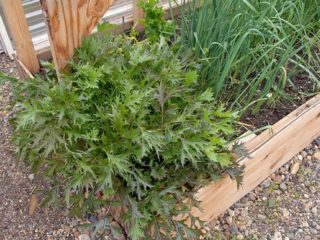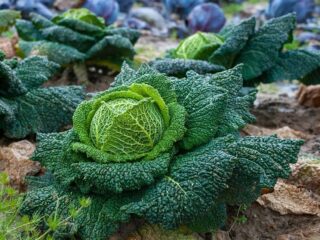Content
How to treat cabbage against caterpillars is a question that is often asked by gardeners who grow this vegetable crop on their plots. The fact is that this plant is quite attractive to pests; it is regularly attacked by aphids, slugs, and snails. And if butterflies begin to flutter over the beds, then this is not at all a good sign that the vegetable will soon be attacked by caterpillars, and if you do not take timely measures to combat them, you can completely lose the entire harvest.

Caterpillars damage shoots and leaves of cabbage, and also lead to a slowdown and even stop the development of the crop.
What caterpillars eat cabbage
There are several types of caterpillars, most often living in cabbage beds. They are laid by butterflies, which in themselves do not pose a threat to the crop, but their larvae are its worst enemy.
In central Russia, caterpillars appear from only four species of butterflies:
- Cabbage moth. A heat-loving insect that is nocturnal. It is inconspicuous in appearance, small in size, gray in color.Brought by the wind, it begins to appear in mid-spring, when the night temperature is +10 °C and above. During its entire existence, the cabbage moth lays about 400 eggs. She does this on the underside of the leaves of the plant. Small butterfly larvae actively gnaw passages inside the plates, growing, they turn into dark brown voracious caterpillars a little more than 1 cm long. If the insect attacked the cabbage in the leaf rosette phase, then the head of cabbage may not set.
The life cycle of cabbage moth is 30 days
- Cabbage scoop. A gray-brown, rather large moth that prefers to live in moist areas. It lives for about three weeks and during this time hatches about 2,700 green larvae, which with age become brown with a yellow stripe and grow up to 5 cm in length. The caterpillars are very voracious, they eat cabbage leaves almost completely, gnaw holes in the head of cabbage, and leave waste products inside, which lead to rotting of the plant.
The cabbage cutworm is most dangerous for early varieties of cabbage.
- Cabbage fire. A small nocturnal orange or dirty yellow butterfly that lays about 60 eggs in its life. Its larvae are light green in color; with age they turn into small caterpillars on cabbage, on the back of which two rows of hairy warts can be seen. Their maximum activity is observed in the second half of summer.
Ognevka got its name because it burns cabbage without fire.
- Cabbage (white cabbage). A species of daytime butterfly with white wings, on which dark spots are visible.One white butterfly lays about two hundred eggs on cabbage leaves, which then turn into fairly large voracious caterpillars up to 6 cm long with a green body and longitudinal stripes on it lightly covered with hairs. On the neck of the cabbage caterpillar there is a gland that secretes a poisonous liquid.
Cabbage grass is most active in hot weather
Reasons for appearance
The main reason why caterpillars spread throughout the beds where cabbage grows is the appearance of butterflies in the garden, laying their larvae. They fly to the site on their own, following the aroma of a vegetable that is attractive to them.
Signs of defeat
It is possible to determine that cabbage has become a victim of a caterpillar attack by a number of signs. Most often this is evidenced by:
- slow development and growth of culture;
- flaccid leaf blades;
- the presence of holes and black spots on the plant.

Caterpillars gnaw passages not only in cabbage leaves, but also damage heads of cabbage, making labyrinths in them
What to do if caterpillars appear on cabbage
As soon as a gardener notices at least a few larvae of harmful butterflies in his garden, he should begin the necessary procedures to eliminate them as soon as possible and begin spraying cabbage against caterpillars. If you neglect this, then in just half a month insects can gnaw all the beds clean.
To destroy caterpillars, gardeners use different means, and everyone chooses their own tactics of control. Some use chemical and biological drugs, some try to defeat the enemy using folk remedies, and some combine all methods and choose an integrated approach.
Chemical preparations for caterpillars on cabbage
Currently, the market offers a fairly wide range of chemicals that can be used to treat cabbage against pests and, in particular, caterpillars. But, despite the fact that most young larvae die literally a couple of hours after spraying with pesticides, it is important to keep in mind that the use of such products is characterized by side effects:
- death of beneficial living organisms;
- disruption of the local ecosystem;
- low effectiveness against adults;
- harmful effects on humans.
As for the drugs themselves, drugs such as Grinda, Kemifos, Fufanon, Antitlin-P are considered less dangerous and most effective. They are recommended to be used strictly in accordance with the rules indicated on the packaging, observing all safety standards, using personal protective equipment. Processing should be carried out in cloudy, windless weather. In addition, you should pay attention to the level of danger of the chemical not only to humans, but also to domestic animals, including bees. Products with hazard classes 1 and 2 are not allowed to be used on the site.

Chemicals help quickly remove caterpillars from cabbage
Biological products
If cabbage is eaten by caterpillars, you can get rid of them using modern biological products that contain live bacteria that have a lethal effect on the parasite.Products of this type allow pest control with minimal negative consequences for beneficial insects, birds, animals and people.
Most often, summer residents use biological products such as Lepidocide, Fitoverm, Dendrobacillin, Bitoxibacillin, Entobacterin-3 to treat their beds.
Fighting caterpillars on cabbage with folk remedies
You can save cabbage from caterpillars using folk remedies, without resorting to chemicals. In everyday practice, gardeners have learned to effectively fight insects using improvised means that are almost always available on the farm. There are many recipes for preparing decoctions and infusions against caterpillars at home; the most popular are the following:
- Dandelion infusion. Dilute 0.5 kg of pre-crushed leaves, stems and flowers of the plant in a bucket of water, add 30 ml of liquid soap, leave for 12 hours.
- Wormwood solution. Bring 10 liters of water to a boil, add 350 g of wormwood and 40 g of grated laundry soap, leave for at least six hours.
- Red pepper decoction. Add 100 g of fresh chopped vegetables to 1 liter of water, let the mixture boil, boil for an hour, strain, and leave for two days. Before use, bring the decoction to a volume of 10 liters.
- Wood ash solution. Soak 400 g of the substance in a bucket of water and leave for 24 hours.
- Soda. Mix the product in equal proportions with flour, add a little pollen from any cruciferous plant, sprinkle the mixture on all above-ground parts of the cabbage.

Folk remedies are harmless to people and plants, but harmful to caterpillars and other insects
other methods
Their natural enemies also help in the fight against butterflies and caterpillars on cabbage.Birds cope very well with this task: sparrows, swallows, tits. Many gardeners specifically attract birds to their plots and place feeders and drinking bowls for them near the cabbage beds. Caterpillars are used as food by wasps and grasshoppers, as well as frogs and lizards.
Various aromatic herbs help repel pests from cabbage. For this purpose, dill, garlic, marigolds, mint, and basil are planted around the perimeter of the beds. The fact is that sharp-smelling plants throw off the scent of butterflies that fly towards the cabbage aroma, thereby preventing them from laying eggs on the crop. For the same purpose, potato or tomato tops can be laid out near the cabbage beds.
Another trick that gardeners resort to is hanging eggshells over cabbage plantings. Flapping in the wind, it resembles butterflies and scares away real insects, as if saying that the territory is already occupied.
Protecting cabbage from caterpillars
In addition to the above methods of combating caterpillars in cabbage plots, preventive measures also help protect the beds. The occurrence of the problem can be minimized if you perform simple operations:
- Keep the garden clean and regularly remove dry tops and debris from the beds, periodically pluck the lower leaves from the crop where water accumulates most.
- Rid the area of weeds, and also mow wild grass near the garden, as it promotes the active reproduction of pests.
- Sprinkle wood ash or tobacco dust into the rows when planting cabbage.
- From time to time, water the cabbage against caterpillars with harmless folk remedies.
- Dig up the area after harvesting to a depth of at least 15 cm.
- In winter, feed the birds in the garden.

Caterpillars are dangerous pests; in order to prevent their appearance on the site, you need to carefully care for it
Conclusion
Cabbage should be treated against caterpillars as soon as even the slightest signs of the presence of an insect are found in the garden bed. The pest is very dangerous, spreads quickly throughout the garden bed and can destroy most of the future harvest in a few days. If you miss the moment, it will take a lot of time and effort to eliminate the caterpillars.












